
Laura
Brenda Kipp


Laura
Brenda Kipp
During the last weekend of the annual Kansas State Fair in Hutchinson this past September, the Kansas Historical Society hosted a booth providing information on our agency programs and promoting the opening of the new museum gallery next year. While there, I also enjoyed staffing the booth one evening for the Kansas 250 Commission. I’m happy to be a part of this commission, which is coordinating our state’s efforts to commemorate this milestone anniversary of our nation’s founding.
July 4, 2026, marks the 250-year anniversary of the signing of the Declaration of Independence. Congress established the U.S Semiquincentennial Commission in 2016 to plan and orchestrate the anniversary, and state commissions soon followed. The 2022 Kansas Legislature created our Kansas 250 Commission with 20 voting members representing a broad range of Kansas history interests, including the executive director of the Kansas Historical Society and the president of the Kansas Historical Foundation. The commission, chaired by Representative Susan Estes, has been meeting over the past year and launched a webpage to collect stories from Kansans and share local events: travelks.com/kansas-250. We will be covering this effort in greater detail in upcoming issues of Zephyr and on social media. For now, I can share that KSHS is planning a special exhibit for 2026 that will explore what Kansas was like 250 years ago (spoiler alert, we were officially a part of Spain).

by the Kansas Historical Society 6425 SW 6th Avenue
Topeka KS 66615-1099
Please send change of address information to the above address, email ashley.wunder@ks.gov, or call 785-272-8681, ext. 263.
Partial funding provided by the National Park Service, Department of the Interior. The contents and opinions do not necessarily reflect the views or policies of the Department of the Interior, nor does the mention of trade names or commercial products constitute an endorsement or recommendation by the Department of the Interior. This program receives federal funds from the National Park Service. Regulations of the U.S. Department of the Interior strictly prohibit unlawful discrimination in departmental federally assisted programs on the basis of race, color, national origin, age, or handicap. Any person who believes he or she has been discriminated against in any program activity or facility operated by a recipient of federal assistance should write to:
Office of Equal Opportunity, National Park Service 1849 C Street NW, Washington DC 20240.
©2024
Another activity I greatly enjoyed in September was visiting with and learning from fellow Santa
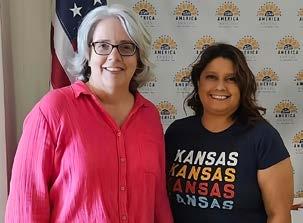


Fe Trail enthusiasts and historians at the biennial rendezvous in Larned cohosted by the Santa Fe Trail Association (SFTA), the Santa Fe Trail Center, and Fort Larned National Historic Site. The theme of this year’s rendezvous was “Road of Conquest: Another View of the Santa Fe Trail,” which explored topics of cultural oppression with diverse scholarship and voices that have been missing from this history. Including everyone’s stories, like the Native Americans who experienced the impacts of westward migration, is an important part of our agency’s mission. Dr. Leo Oliva, a founding member of the SFTA and conference organizer, noted, “The Trail was more than a route of commerce and was an important part of the colonialism and the conquest of Indigenous people and the people and land of much of Mexico.” Leo served on the Historic Sites Board of Review from 2006 to 2012 and is on the honorary board of the Kansas Historical Foundation. He authored a popular series of books on Kansas’ frontier forts published by KSHS that is available in the Foundation’s Capitol Store and Museum Store Online. Many thanks, as well, to Joanne VanCoevern, SFTA manager, for helping organize this year’s meeting.
For decades, KSHS has worked with the National Park Service (NPS), the SFTA, and other entities to document and preserve the Santa Fe Trail, which is one of five National Historic Trails in Kansas. But it should be noted that the Kansas Daughters of the American Revolution, also a statutory member of the Kansas 250 Commission, initiated the first efforts to document and commemorate the trail in 1906 by marking its length in Kansas with 70 distinctive red granite markers. KSHS directors long before my time were publishing Santa Fe Trail histories.
This red granite marker is located on the north side of French Frank’s Santa Fe Trail segment, which was listed in the National Register in April 2013.
The trail received national recognition in 1963 when the Council Grove-related sites and the Santa Fe Trail remains west of Dodge City were designated as National Historic Landmarks, the highest designation in the country. After the National Register of Historic Places was created in 1966, nearly 30 years passed before additional trail segments were listed in the National Register. A pivotal moment during my tenure at KSHS occurred in 2009 when the NPS convened a meeting in Dodge City between the State Historic Preservation Offices of all the Santa Fe Trail states and SFTA to begin updating the National Register historic context document and criteria for listing surviving Santa Fe Trail sites and segments. This project has resulted in 32 new or amended SFT-related segments in Kansas listed in the National Register.
I want to put a plug in for next year’s SFTA Symposium, which will be held in Council Grove September 21-28, 2025. Mark Brooks, our site administrator for Kaw Mission and Last Chance Store State Historic Site, is one of the community organizers for this meeting. Our historic site will be featured prominently during this event.
I want to mention the recent retirement of Joy Brennan, program coordinator for the Museum and Education Division. It has been a pleasure to work with Joy whose days with the agency began more than 43 years ago, before we moved to west Topeka. We are grateful for Joy’s service and wish her well in retirement!

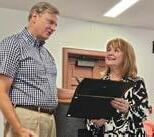
Patrick Zollner EXECUTIVE DIRECTOR, STATE HISTORIC PRESERVATION OFFICER

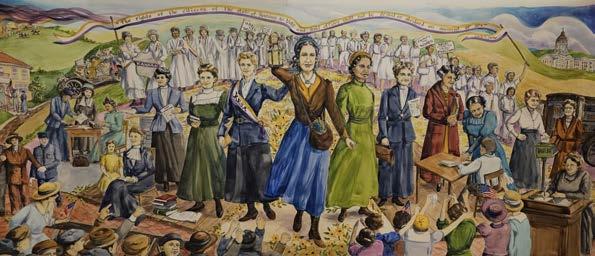
By Bobbie Athon, MS, Director of Communications

Senator Elaine Bowers of Concordia grew up in Delphos where the story of her hometown celebrity, Grace Bedell Billings, piqued her interest in women’s rights and civics. When 11-year-old Bedell of New York wrote to presidential candidate Abraham Lincoln in 1860, women had no voice in national politics. Young Bedell suggested that Lincoln grow a beard to soften his thin face. Nine days later, he responded, asking if people might think a beard was a “silly affection.” Four months later, a bearded Lincoln rode the president-elect Lincoln Special train, sporting the 34-star flag with the new state of Kansas. In Westfield, Grace joined him on the rear platform, and he gave her a kiss, “You see, I let these whiskers grow for you, Grace,” she recalled him saying.” Years later, after Bedell’s marriage, she and her husband moved to Kansas where they raised one son. Billings took an active role in the community with Republican women, the library board, Red Cross relief, and the Woman’s Christian Temperance Union with members active in the suffrage movement. She exercised her newlyfound right to vote in municipal elections in 1887. Bowers was inspired by the generations of Kansas women who fought for equal rights. As co-chair of the Capitol Preservation Committee, she was gratified to receive a proposal from the Kansas League of Women Voters to honor the state’s suffrage advocates. Her bill in the Kansas Senate was supported nearly unanimously in 2022. Phyllis Pease of Manhattan was selected to complete the artwork and the Kansas suffragist memorial committee began raising private funds. The committee is still encouraging donations for the completion of this mural.
Artist Phyllis Pease of Manhattan depicts 13 Kansas suffragists, carrying a banner with the state amendment passed by voters in 1912, “The rights of the citizens of the state of Kansas to Vote and hold offices shall not be denied or abridged on account of sex.”
From far left:
– At door: Anna Anthony of Leavenworth, (1844-1930), sister-in-law of Susan B. Anthony, hosted national suffragists during the 1887 campaign
– Seated: Lutie Lytle of Topeka, (1875-1955), first African American woman admitted to the Kansas Bar Association, lectured on Kansas’ marriage and divorce laws
– Seated: Anna Wait of Lincoln, (1837-1916), published the Lincoln Beacon with 20 years of suffrage news, co-founded the Kansas Equal Suffrage Association (KESA)
– Lilla Day Monroe of WaKeeney, (1858-1929), first woman to practice law before the Kansas Supreme Court, published the Kansas Woman’s Journal – Annie Diggs of Lawrence, (1853-1916), People’s Party suffragist and KESA president; first female state librarian, helped design the Capitol’s state library
– Laura Johns of Salina, (1849-1935), president of KESA and the Kansas Republican Woman’s Association, coordinated 30 state suffrage conventions – Center: Clarina Nichols of Wyandotte, (1810-1885), a lecturer, editor, and Underground Railroad conductor, led the woman suffrage movement in Kansas Territory
– Holding resolution: Lizzie Sheldon of Lawrence, (1851-1942), University of Kansas law school graduate, wrote final woman suffrage resolution, ran for seat on the Kansas Supreme Court
– Carrie Langston of Lawrence, (1873-1938), civil rights advocate and journalist, urged African American women to seek political careers, emphasized education for her son, Langston Hughes
– Mamie Dillard of Lawrence, (1874-1954), prominent educator, promoted civil rights in education, taught Langston Hughes
– Jane L. Brooks of Wichita, (1867-1945), KESA president, founded first state chapter of the national League of Women Voters
– Lucy Browne Johnston of Topeka, (1846-1937), lawyer, expanded the Kansas Traveling Library collection; as KESA president, led the 1912 campaign to ratify the Kansas Equal Suffrage Amendment
– Seated: Minnie Grinstead of Larned and Liberal, (1869-1925), first woman elected to the Kansas House of Representatives, presented the joint resolution to ratify the 19th Amendment
An unveiling ceremony for the mural on the first floor of the Kansas State Capitol will be held on Kansas Day, January 29, 2025. Find event details and learn how to help fund the mural or request a presentation for your organization by visiting bit.ly/kssuffragistsmural
A non-profit supporting and promoting the work of the Historical Society through fund raising, fund management, membership, and retail.
Gaye Leonard, CEO and Development Director

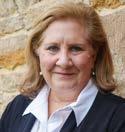
Linda Jeffrey, president of the Kansas Historical Foundation, announced in August 2024 that Gaye Leonard will serve as its new CEO/development director. Praising her vast foundation leadership and fundraising experience, Jeffrey extended her confidence in Leonard’s ability to support the Kansas Historical Society’s major initiatives, including the renovation work at the Kansas Museum of History.
After 10 years in the Denver, Colorado, area overseeing development for the College of Arts & Media at the University of Colorado, Rose Community Foundation, and Cherry Creek Schools Foundation, Leonard says it’s an honor to return to Kansas. “My paternal ancestors settled here in the late 1800s, not far from where my father would receive a football scholarship to Ottawa University in the mid-1950s,” Leonard said. “That experience prepared him for a career in the restaurant business, most notably King’s Food Host, a 1960s and 1970s chain in which customers ordered by phone from their table. Having helped my dad serve breakfast to the Marching Jayhawks at Memorial Stadium and welcomed customers to the opening of the 75th & Metcalf location in Overland Park, the history of this state is personal to me. I am excited to work with the other dedicated folks at the Kansas Historical Society to preserve and promote Kansas heritage.”

Get into the holiday spirit with gifts made right here in Kansas! Shop at the Capitol Store for unique, locally crafted items that are perfect for everyone on your list. Our selection offers one-of-a-kind treasures from Peter Hodge’s beautiful woodwork to Dulces jewelry crafted with historic copper from the Capitol Dome. Whether you’re searching for stocking stuffers or standout pieces, you’ll find something special while supporting local artists. Visit us in store from 9 a.m. to 5 p.m. Monday to Friday and 10 a.m. to 4 p.m. Saturday, or shop online at bit.ly/kshsstore for a hassle-free holiday experience. Make this season truly unforgettable with gifts that carry the heart of Kansas!
Held annually in November, National Philanthropy Month is a great time to support the Kansas Historical Society by donating to the Kansas Historical Foundation. Your generous gifts—provided as cash, appreciated stock, real estate, or bequests—are essential to preserving and sharing the history of our great state. Cash donations to the state historic sites, the purchase of annual memberships, grant support, and corporate contributions also help sustain the Kansas Historical Society’s ongoing education and outreach. To learn more about giving opportunities, please visit bit.ly/kshsgiving or contact Gaye Leonard at 785-272-8681, ext. 201; gaye.leonard@ks.gov. Giving Tuesday, the first Tuesday after Thanksgiving, is a popular day to provide charitable gifts for local causes. If you’re passionate about Kansas history and want to help inspire future generations, please consider donating to the Foundation on December 3, 2024. Those who contribute $25 online before midnight will be invited to preview the renovated Kansas Museum of History at a special event in 2025, prior to the public opening. To make a onetime tax-deductible donation, please visit bit.ly/kshsdonate or scan this QR code.

Staff members visited with nearly 2,000 guests during the Explore Kansas Festival of the Kansas State Fair. Their participation in this event was made possible by donations to the Kansas Historical Foundation. We are thankful for your giving!
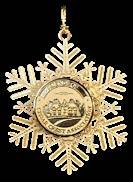

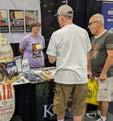


Protecting and understanding the archeological resources of Kansas— working with local, state, and tribal entities, offering educational programming, and conducting and sharing research.
By Julie Sebanc-Butler, MA, Archeology Lab Director

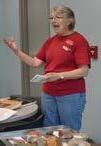
Having accepted archeological donations since 1877, the Kansas Historical Society (KSHS) is the primary repository of Kansas history responsible for preserving items in perpetuity. The archeology lab is used to evaluate offers of donation, identify and record artifacts uncovered at excavations, and properly preserve collection items. Our archeologists charged with their care must also stay abreast of changes to federal legislation impacting the field, like the new Native American Graves Protection and Repatriation Act (NAGPRA) regulations announced in our July - August 2024 issue. To meet these requirements, archeologists have used the lab to inventory our Native American artifacts and consult with federally recognized Tribes to determine how to best care for, store, and display these items. This space is also critical for public outreach initiatives held throughout the year, including educational tours, workshops, and lab events.
By Nikki Klarmann, PhD, State Archeologist
The electronic moveable shelving in the archeology lab encountered a burst hot water pipe from the room above in August 2022. Initially installed in 1993, the logic board was irreparable due to obsolete parts. Quick assistance from KAA volunteers helped ensure that no artifacts were damaged by the water. Although many storage boxes needed replaced, all artifacts were protected in plastic bags and remained unscathed. Instead of pursuing another electronic system, which is subject to tech failure and more expensive, the agency selected a mechanical assist system. Last December, KSHS staff members transferred about 1,900 boxes from the moveable shelving room to the Potawatomi Mission for temporary storage. RDT
By Paige Bump, MA, Project and Outreach Coordinator
The Kansas Historical Society and Kansas Anthropological Association (KAA) held events July 26-28 and August 9-11, 2024, at our archeology lab in Topeka. Ten to 17 volunteers assisted each day, resulting in the cleaning, sorting, and cataloging of about 600 artifacts. These items were excavated from two Skinner Homestead sites in Bourbon County during the Kansas Archeology Training Program (KATP) field school held this past June. Long-time KAA members and several first-time participants contributed 454.5 lab hours during these six days.
Highlights from the first weekend event include an educational talk from Virginia Wulfkuhle on lithic tool types and materials that commonly occur in Kansas, an informational presentation by Dr. Tim Weston on the 2024 KATP field school sites, and a celebration for long-time KAA member Sharon Sage’s birthday. Artifacts were cleaned and cataloged from 14BO361, the early Native American site, and 14BO14, the historic site. During the second weekend event, archeological work focused on the historic site. Notable artifacts include chipped stone tools, a lead toy soldier, a toy farmer, a portion of a pocketknife, parts of an iron stove, a glass lamp base, and a ceramic lid. The artifact collection analysis and field school report will soon be completed by Tod and Wendi Bevitt of Buried Past Consulting. We want to thank all 2024 KATP lab event participants for dedicating their time!


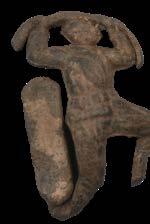
Bruynzeel Storage Systems, Inc., installed new units in late December, allowing boxes to be returned in late January. The overhead pipes were also replaced lessening the chance of future leaks. Though no longer automatic, the new system should last for years to come.



Julie Sebanc-Butler was hired as KSHS’ archeology lab director in spring 2024. Having lived overseas for the past 27 years, Julie’s passion for science, archeology, and social justice led to study of historic archeology in Australia before contributing to the discipline in her home state. With archaeology and human biological sciences undergraduate degrees and a research-based master’s from the University of New England in New South Wales, Julie studied Australia’s colonial and convict history and researched Indigenous assemblages. Prior to joining KSHS Julie was an artifact analyst and report writer for a historic archeological consulting firm in Sydney. Her most impactful projects involved analyzing artifacts from a Depression Era shantytown jokingly nicknamed Hollywood and reporting on the difficult history and artifacts of Parramatta Female Factory, a women’s convict-era jail later converted to an institutional “home” to reform “unruly” girls. Julie
Julie Sebanc-Butler, MA, Archeology Lab Director
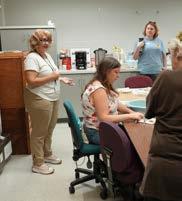
also helped examine artifacts for respected institutions like the Australian Museum, Tasmanian Museum and Art Gallery, World UNESCO Heritagelisted Port Arthur Historic Site, and the University of New England. Since joining KSHS Julie has progressed several projects initiated by the former lab director, thanks in part to the assistance of her volunteers. She also participated in this summer’s field school, partnered with KAA to host two lab events to clean and catalog artifacts, and helped seek counsel from Native American Tribes regarding culturally significant collection items. Julie is grateful to all who have helped her settle into her position and is excited to find new ways to investigate the artifacts in our collection and continue discovering more about Kansas’ past. Stay tuned for opportunities to learn from Julie, including “It’s All Archeology,” a KAA workshop on identifying historical artifacts planned for February 2025.
We would like to recognize two extraordinary volunteers, Jim Roberts and John Gaska, who have shown admirable dedication in their service commitment to the archeology lab.
JIM ROBERTS: Jim, longtime member of KAA and the Kansas City Archaeological Society (KCAS), is celebrating a stellar accomplishment having donated more than 2,000 volunteer hours to KSHS since 2016. From Marsha King first teaching him how to catalogue artifacts and former lab director Chris Garst further honing his skills, most of his service has focused on this endeavor. KAA President Tim Weston, who retired in 2022 after 31 years at KSHS, can’t recall a time when Jim wasn’t involved with the lab or KAA. “That level of sustained dedication is rare these days, and is certainly worthy of recognition,” Weston said. Jim is also involved in outreach with KCAS and has donated archeology collections to our agency and other institutions.
JOHN GASKA: Shortly after he began volunteering at the museum in 2014, John transitioned to the archeology lab where he started digitizing our slide collection. He often jokes that he has “lifetime job security” due to the sheer volume of slides. John is also an avid researcher, working to document Kansas’ Black settlements from the 1870s to 1890s. At the suggestion of Museum Curator Donna Rae Pearson, John submitted his research collection to our State Archives to ensure availability to current and future researchers.
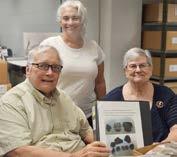
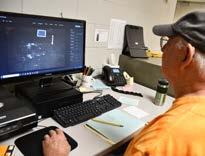
By Bethany Falvey, MFA, Subgrants Manager
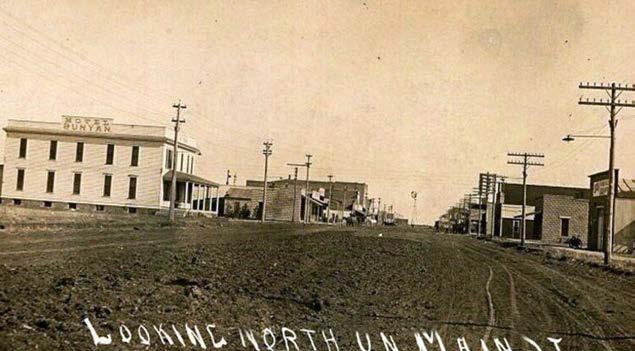
The Kansas Rural Preservation grant is a federal subgrant from the National Park Service’s Paul Bruhn Historic Revitalization Grants Program. In federal fiscal year 2023, nearly $9.7 million was awarded to support the preservation of historic buildings in rural communities across America. Kansas was among 12 recipients selected to participate in this regranting program. The award of $750,000 to the Kansas State Historic Preservation Office facilitates a second round of grants. The first round of grants in 2021 awarded $499,645 to 15 properties across the state.
This second grant round targets properties in rural downtown commercial cores with priority given to Kansas Main Street communities. The 2024 Kansas Rural Preservation grant committee reviewed 24 requests totaling more than $2.2 million. Eight projects were awarded a total of $750,000. We look forward to working with the grant recipients and thank everyone who applied!
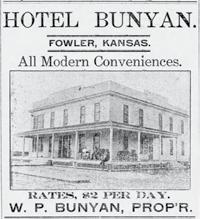
By Megan Maize, MS, Survey and Outreach Coordinator
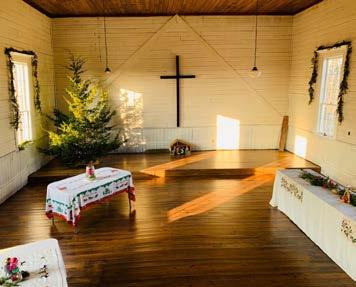
The Kansas State Historic Preservation Office (SHPO) received its first round of Paul Bruhn Grant funds in federal fiscal year 2019. In 2021 the office regranted the $500,000 funds to 15 projects, which concluded last year. As a recipient of this Kansas Rural Preservation grant round, the Little Stranger Church received $10,863 for its interior walls, floor restoration, and attic clean up.
The Little Stranger Church was listed in the National Register of Historic Places in 2015 for its significance in the settlement of Leavenworth and its architecture as the oldest wooded church in Kansas. The church, named after a local creek, was built in 1868 from local cottonwood trees and donated materials. During the Great Influenza epidemic in 1918 and 1919, Kansas banned gatherings of more than 20 people including at church services, weddings, and funerals. As a result, the church was forced to close its doors. Many different community organizations, such as 4-H and canning clubs, used the building as meeting space over the years. It also became a place where families held weddings and bridal showers.
Even though the church was listed in the National Register of Historic Places, it fell into disrepair. The community tried to help raise money through a pie social to fund preservation work, but the donations were not enough. Efforts then focused on applying for funding programs administered by the SHPO. This resulted in Heritage Trust Fund grant awards of $66,604 in 2016 to repair the roof and foundation of the structure and $90,000 in 2020 to complete the exterior restoration. The owners also utilized the Kansas Historic Tax Credit program to help offset out-of-pocket costs and were
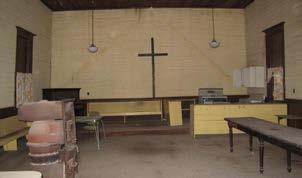
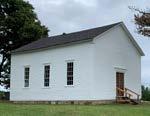
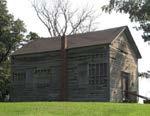
issued more than $22,000 in tax credits. Looking for more options to help restore the interior, the property owners applied for the Kansas Rural Preservation grant program in federal fiscal year 2019 as well as other grants.
The restoration of the Little Stranger Church created 22 jobs during the height of the COVID-19 pandemic in 2020. The church is not open to the public, but it still hosts an annual pie social and can be reserved for events.

By Megan Maize, MS, Survey and Outreach Coordinator
The Historic Preservation Fund (HPF), a grant program administered by the National Park Service (NPS), is derived from Outer Continental Shelf mineral receipts. The Kansas State Historic Preservation Office (SHPO) receives money every year from the NPS; 10 percent must go to Certified Local Governments (CLGs) per federal regulations.
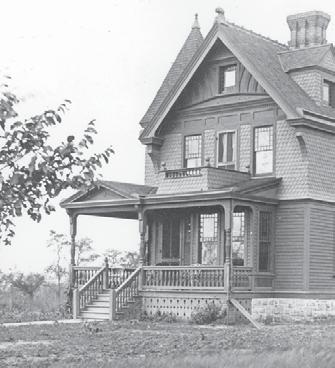
All activities must pertain to preservation programs outlined in the National Historic Preservation Act of 1966. They must follow The Secretary of the Interior’s Standards and Guidelines for Archeology and Historic Preservation and National Register Program Guidelines. Eligible activities include but are not limited to surveys, National Register nominations, preservation plans, design review guidelines, and educational activities.
The Historic Preservation grant committee reviewed seven grant applications totaling $92,943. On June 1, 2024, these applications were approved by the Kansas Historic Sites Board of Review. We look forward to working with the grant recipients and thank everyone who applied!
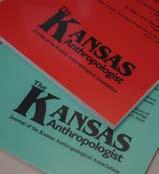
Inset: Published annually, The Kansas Anthropologist contains scholarly articles and book reviews related to archeology and anthropology.
By Kristen Johnston, MA, Historic Tax Credit Supervisor
Katrina Ringler has been an integral member of the State Historic Preservation Office (SHPO) and Cultural Resources Division since joining the Kansas Historical Society (KSHS) in 2001. With a historic preservation bachelor’s degree from Southeast Missouri University and history master’s degree from the University of Alabama at Birmingham, Katrina was hired to oversee the newly developed State Historic Rehabilitation Tax Credit program and help administer the Federal Historic Tax Credit program. Since then, she has worked with our Certified Local Governments program, Heritage Trust Fund grant program, Historic Preservation Fund grants, and Kansas Rural Preservation grants. Those who have pursued historic preservation work in Kansas in the past 23 years have likely worked directly or indirectly with Katrina.
As the SHPO supervisor for many years prior to 2023, Katrina was named the deputy state historic preservation officer and director of the Cultural Resources Division. Her dedication to historic preservation and cultural resources management is unmatched, making her leadership and guidance in these fields second to none. Katrina’s staff members commend the way she has elevated the preservation office to serve Kansans, and laud her empathy, problem-solving skills, and ability to navigate the intricacies of her position. She is also well-known by many state agencies and local communities for her professionalism, reasonable and patient approach, and far-reaching impact. Due to her immeasurable influence, Katrina was selected as the first recipient of the 2024 We Kan! Awards, administered by the Kansas Sampler Foundation to honor outstanding efforts to preserve and sustain rural culture. On July 1, 2024, more than 40 KSHS staff members joined for a surprise gathering hosted by Sampler’s co-directors
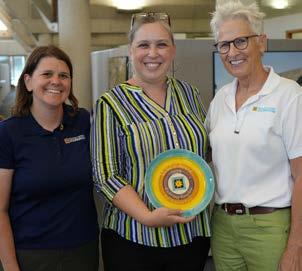

Marci Penner and Sarah Green. Penner cited Katrina’s efforts to help innumerable people and organizations weed through the complexities of preservation while presenting her award. The round plate, designed by Stacy Barnes, is engraved “For Supporting Preservation” to mark her achievements in preserving and promoting Kansas history at the local, state, and national levels. Katrina is such a deserving recipient of this award. We congratulate her on this honor!
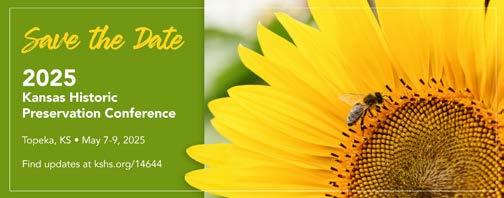
Using stories from Kansas history to encourage new explorations of the past, understand our present, and appreciate the experiences of others; collecting, preserving, and providing access to the state’s material culture.
By Anna Bassford-Woods, MA, Museum Curator
The museum continues to collect new items even while the gallery remains under renovation. Active collecting is vital to our mission to tell the story of Kansas. This role keeps staff members busy behind the scenes.
Our accession committee meets monthly to assess new offers of donation. The committee makes difficult decisions, carefully considering what items to accept to fill its storage space and preserve into perpetuity. This climate-controlled area is extremely limited in size. While the committee must be mindful of our current collecting needs, it must also be somewhat visionary, anticipating the next generations of Kansans visiting the museum. Among the factors considered are whether similar items have been acquired, the object’s story, its connection to Kansas, and its potential to fill underrepresented voids in the collection. In recent months we accessioned 129 individual artifacts, which include Mariachi Estrella costumes, items from original Nicodemus families, and a homemade grain truck model.
MARIACHI ESTRELLA, an all-female band, was begun by Teresa Cuevas. Born in Topeka to parents from Guanajuato, Mexico, Teresa started playing classical violin at age eight. She was later introduced to traditional Mexican mariachi through records. When her children were grown, she had an opportunity to play the music of her people, first through Our Lady of Guadalupe. Father Julio, a priest from Guatemala, reintroduced the musical form into the weekly mass. Women in the church choir joined Teresa in an all-female mariachi band, the only one in existence at the time. The band was invited to perform nationally and teach other artists to build their craft. During a performance in Kansas City, Missouri, in 1981, tragedy struck as a hotel walkway collapsed, killing four members of the group and severely injuring Teresa. Mariachi Estrella survived and the legacy continues today, with two of Teresa’s granddaughters performing in the mariachi band, Maria the Mexican. The accession committee was delighted to acquire a complete Mariachi Estrella costume from one of the members, including a skirt, jacket, blouse, and headwear!
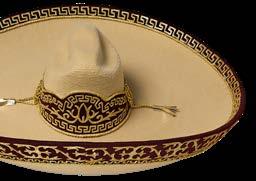
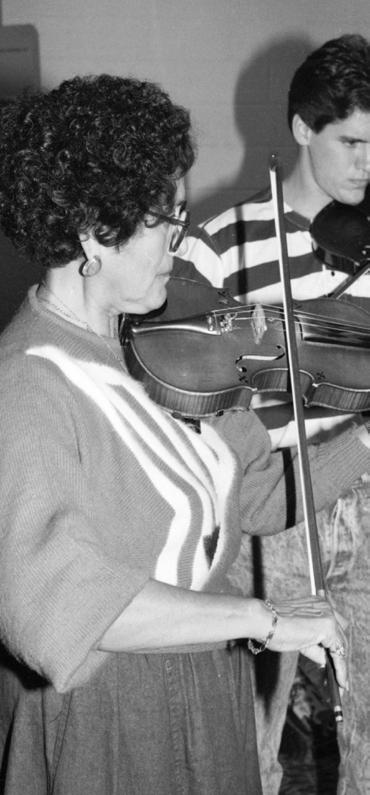

NICODEMUS NATIONAL HISTORIC SITE, in northwest Kansas preserves and interprets the only remaining Black settlement in the western United States. Formerly enslaved African Americans left Kentucky at the end of the post-Civil War Reconstruction Era to seek freedom in the “Promised Land” of Kansas. Nicodemus symbolizes the pioneer spirit of African Americans who dared to leave the only region they knew to gain the opportunity to develop their talents and fulfill their dreams. Some descendants of the original settlers still reside in Nicodemus. A few of these individuals made a generous donation in August that will be highlighted in our new gallery! The donation included two oil lamps and two rifles, which will help tell the important story of this unique Kansas community.
FARMING has always been essential to Kansas as the livelihood of many families and the foundation of the economy. Our collection contains numerous objects to tell the farming story, including a real 1955 Ford F-600 grain truck. The accessions committee recently acquired a one-of-a-kind grain truck model of a 1949 Ford F-5, ton-and-a-half, owned by the donor’s father. A classmate of the donor created the model as a Christmas gift circa 1955. The classmates attended Harmony School District 48 in Harvey County. This model, made by a child is a rarity. Creations from youth seldom last, making this homemade toy a special addition to our collection.
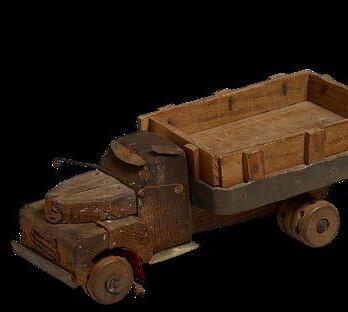
As we continue striving to collect objects to represent everyday experiences in the lives of Kansans, we invite you to consider donating an item to the Kansas Museum of History. If you have a threedimensional object you would like to offer, please contact us at 785-272-8681, ext. 407; nikaela.zimmerman@ks.gov. Learn how to make other offers of donation at bit.ly/kshsdonateitems
Check out the new “Reform in Kansas” video playlist on the Kansas Historical Society Education YouTube channel. Developed by Meg Smith, our summer intern and a museum studies master’s student at the University of Kansas, this series begins with an overview of reform movements. Later installments focus on Kansas’ contributions to social, political, and economic reform, with videos dedicated to prohibition, women’s suffrage, populism, and socialism. The Progressive Era Movement will be covered in an upcoming release. To view this illuminating series, visit bit.ly/kshsedureform or scan this QR code.

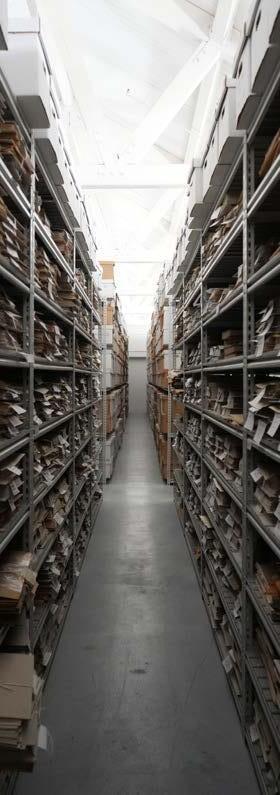
Collecting, preserving, and providing access to the state’s history through unpublished materials, personal papers, audio-visual materials, and government, organization, and business records.
By Dylan Sweyko-Kuhlman, MLS, Senior Collections Archivist
Newspapers are a valuable resource for local, state, and national history. They provide a unique snapshot of daily life, family milestones, and hometown memories. The Kansas Editors’ and Publishers’ Association envisioned the power of this resource when it formed the Kansas Historical Society (KSHS) at its annual convention in Topeka in 1875. The goal was “saving the present and past records of our twenty-one years of eventful history.” The collection and preservation of the state’s newspapers became one of the Society’s first goals and remains so today. Nearly all the Kansas newspapers sent current issues in exchange for membership in the Society. Back issues and discontinued newspapers were solicited. Consequently, the Society accumulated one of the largest and most complete statewide newspaper collections in the nation. This included 5,625 English language titles published between 1860 and 1922 that met the Library of Congress’ definition of a newspaper. From 1877 KSHS published a list of its newspaper holdings in annual or biennial status reports. The History of Kansas Newspapers listed titles from 1854 to 1916, promoting its size and significance.
The collection includes nearly 100 African American newspaper titles dating from 1876. Representing 22 Kansas communities and 18 counties, they provide an important local voice by reporting news, highlighting community leaders, championing causes, and calling for change. The Society is working to collect more titles and fill collecting gaps.
“
The
Newspaper Collection of the Kansas State Historical Society
is
the largest in the world. It is known and spoken of in every country where great libraries are maintained. In London, Paris, Rome and other centers of art and culture you will hear of the Kansas Newspaper Collection. There is nothing to compare with it. It contains nearly 50,000 bound volumes. These are preserved in the magnificent Memorial Building, which is absolutely fireproof.”
List of Kansas Newspapers, 1917-1935
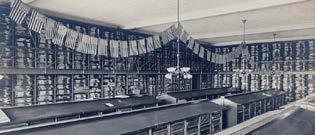
From its inception, Society staff members have been committed to preserving the fragile newspaper collection. One major step was developing the microfilming program in July 1946. All pre-1930s newspapers were filmed by the 1980s. A boost in capability came in 1982 with a grant from the National Endowment for the Humanities to join the U.S. Newspaper Program (USNP). With USNP grant money and appropriations from the Kansas legislature in 1980, the microfilm lab purchased five Recordak planetary cameras and added five employees. This led to the microfilming of more than 1.6 million pages, cataloging of more than 10,000 titles, and designation as one of eight National Repositories in the U.S. Most of the remaining papers in the collection were filmed by 2000. The Society currently has more than 70,000 rolls of newspaper microfilm. The Society did its best to bring its newspaper collection into the digital era in the 2000s. Through the National Digital Newspaper Program (NDNP) from 2009 to 2015, KSHS produced and submitted more than 300,000 pages of Kansas newspapers from its collection to the Library of Congress and Chronicling America, the NDNP’s portal for digital newspapers. The Society continued by partnering with the Kansas Press Association and digital vendor, NewzGroup, in 2014. This partnership enabled the Society to acquire a three-year archive of Kansas titles and connect new submissions weekly through automated access to NewzGroup’s site. The Society provides inhouse access to this digital content in the State Archives research room. In 2015 the Society signed a progressive agreement with Newspapers.com to make the Kansas newspaper collection available in a digital format. The deal greatly increased the rate at which the Society’s microfilm could be digitized, while providing Kansas residents immediate access to content on Newspapers.com. In 2018 the archives digitized more than 12 million pages of public domain newspaper content, mostly from the years 1853 to 1923, which is now free on Newspapers.com. The digital newspaper program continues to work with publishers and stakeholders to secure permission to digitize and upload content to the site. For example, the Iola Register permitted the Society to share nearly its entire back catalog with Newspapers.com, ensuring access for Kansas residents. Partnerships like these help KSHS continue to grow, preserve, and promote these valuable Kansas newspapers.
Kansans can get free access to KSHS content on Newspapers.com by entering their driver’s license or state ID at bit.ly/kshsdigpartners. To determine if specific newspapers titles or date ranges are available in microfilm or online, use our database at bit.ly/ksnewsdb
By Teresa Coble, MLS, Acquisitions Archivist

The Harriet Newell Keys Jones collection acquired by the State Archives in 2024 serves as the definitive record of Jones and her husband, Harvey Jones. Harriet was a writer and taught at the Choctaw mission, and her husband, Harvey, was the first pastor of the Beecher Bible and Rifle Church in Wabaunsee. Organized in 1857 by settlers from New England, the church building was dedicated in 1862. The church congregation takes its name from “Beecher Bibles,” in reality Sharp’s carbines, which were furnished to free-state settlers to combat proslavery sympathizers. Abolitionist preacher Henry Ward Beecher collected money for the arms that were shipped to Kansas Territory in boxes labeled “Bibles.”
This collection includes diaries, letters, photographs, and various poems written by Harriet Jones, as well as research documents, such as genealogies, transcriptions, and newspaper articles, compiled by the donor regarding the Joneses and the Beecher Bible and Rifle Church. The historical documents range from circa 1846 to 1895 and the research documents as late as 2007. The collection was donated by the Joneses’ great-great granddaughter who noted that Harriet was a talented and prolific writer having recorded her thoughts, teaching, and activities in her diaries.
To view the Harriet Newell Keys Jones collection, please visit the State Archives research room in Topeka. The collection reference unit ID is 528234.
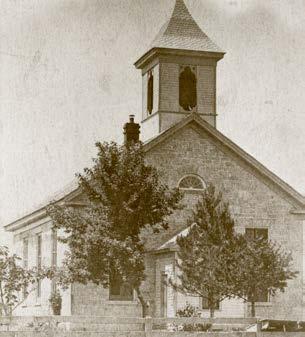
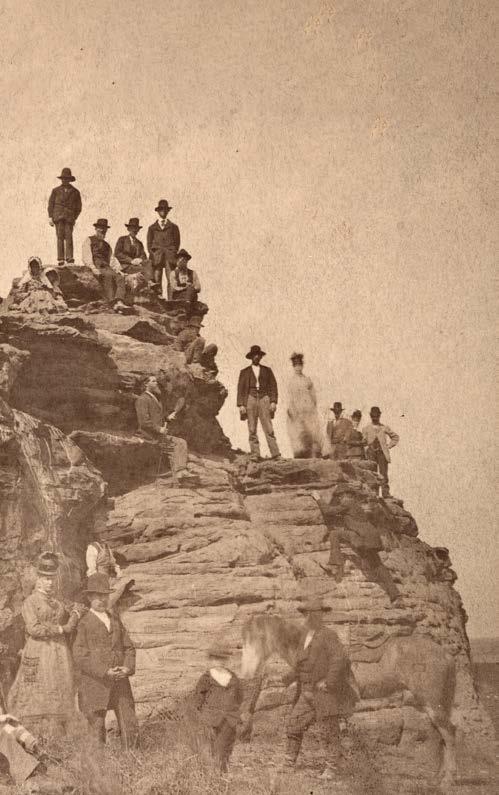
Preserving and protecting the state historic sites placed under the care of the Historical Society; educating visitors and classes through exhibits, exterior interpretation, and programming.
By Bobbie Athon, MS, Director of Communications
Pawnee Rock has stood as a sentinel for generations of peoples who lived, hunted, and traversed the plains. Many who rested here left behind evidence carved in the soft multi-colored sedimentary stone of the majestic bluff.
A part of the Dakota Formation, like Coronado Heights near Salina, the outcropping formed over time from deposits of sandstone, mudstone, and clay as the inland sea receded.
Names for the landmark have included Rock Point and its present name, which honors the Pawnee people who occupied these plains with other Native American Tribes. The promontory once rose as high as 120 feet, the most prominent point for miles.
Pawnee Rock signified the halfway point between Independence, Missouri, and Santa Fe, Nuevo México, on the Santa Fe Trail. The promontory offered a refuge for wagon trains to camp. Journalist Matthew C. Field joined merchants and tourists on the trail in 1839 and observed, “Pawnee Rock springs like a huge war from the carpeted green of the prairie.” Susan Shelby Magoffin, an 18-yearold newlywed with her husband on a wagon train, camped at Pawnee Rock on July 3, 1846; the next morning she carved her name, “...among the many hundreds inscribed on the rock and many of whom I knew.”
Marion Sloan recalled when she was seven and making the first of five journeys on the Santa Fe Trail in 1852, her family camped at Pawnee Rock. Noise awoke her as she slept. “When morning broke our horse herd was gone, a herd of two hundred army horses… so we waited two weeks while the out-riders went back to Fort Leavenworth to buy up more horses.” Harriet Bidwell Shaw, on a wagon train with her husband in 1861,
noted on October 8, “…country very level & beautiful,” and on October 9, “Started soon after 5 expecting a good days drive— passed a large rock called Pawnee rock.”
Soldiers and scouts witnessed the landmark as they crossed between frontier forts and followed the military trails to the Mexican War in the 1840s. Notable visitors include Christopher “Kit” Carson, who worked on a wagon train to cover his passage west at the age of 17 in 1823. Robert E. Lee, a young army officer, passed the rock as he headed to the conflict along the Mexican border in 1845.
A “considerable colony” from Kentucky came to settle in 1872. They took the Union Pacific train to its western point, arriving in Fossil, now Russell, in April. They had a baggage wagon, but individuals walked southward 50 miles before reaching Pawnee Rock. They pitched a tent, dug a well, and laid claims. Young Edward Hoch, who would be Kansas’ 17th governor, was among the new arrivals and helped dig the well.
“ Pawnee Rock springs like a huge war from the carpeted green of the prairie”
–
Journalist Matthew C. Field, 1839
Construction on the main line of the Santa Fe railroad began near Pawnee Rock in 1874. The stone construction material tempted settlers and workers who quarried the resource for local building projects and railroad track beds. Settlers arriving in the 1880s viewed a much shorter outcropping, as it stands today at about 50 feet in height.
Benjamin Unruh donated the Pawnee Rock land to the state in 1908. The dedication to unveil a monument honoring those who passed over the Santa Fe Trail was funded by several Kansas women’s organizations, including the Daughters of the American Revolution. Many of these groups participated in the program, which included remarks by former Governor Edward W. Hoch and Lillian Mitchner, president of the Women’s Christian Temperance Union. Bands, historians, dignitaries, and 7,000 spectators also participated on May 24, 1912.
A pavilion, designed by Ray L. Gamble, state architect, was added in 1920, with an observation deck to approximate the original height of the rock. A state highway marker was placed near the site in 1941. Pawnee Rock became a state historic site in 1963 to be administered by the Kansas Historical Society. Pawnee Rock State Historic Site was listed in the National Register of Historic Places in 1970.
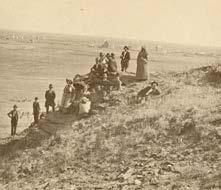

Restoration work on the monument and pavilion were completed in 2012, partially funded by the Transportation Enhancement Program from the Kansas Department of Transportation. This included work on the cast iron spiral staircase leading to the upper platform and an ADA accessible sidewalk. Here visitors can share a stunning view much like generations of Kansans have done over time.
Pawnee Rock State Historic Site
631 N Centre St, Pawnee Rock, KS 67567
One-half mile north of US 56
Visit: Dawn to dusk | Open year-round | Admission is free!
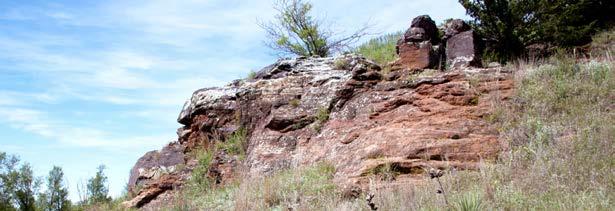

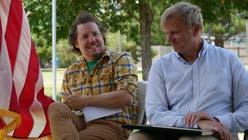
Fort Hays State Historic Site in Hays was the first museum Adam Conkey remembers visiting, and it left an impression on him. He attended Fort Hays State University, left the area, and eventually returned to Hays. Adam was reacquainted with the site in 2022 when he became assistant site administrator. After providing tours for a few years and hosting special events, he was promoted to site administrator in June 2024. He oversees all aspects of the multi-building site, including managing employees and volunteers, making minor building repairs, and providing site tours.
Adam enjoys sharing the multi-faceted history of the fort and western Kansas with people from around the globe. His favorite events involve reenactors who tell stories of the people associated with historic Fort Hays. He especially enjoys Christmas Past and looks forward to it all year.

Candlelight Charm
5-9 p.m.
Saturday, November 9
Kaw Mission and Last Chance Store, Council Grove
Catch a trolley ride to our decorated sites to learn more about the Kanza and the Santa Fe Trail. Guests will be entered to win a door prize and can enjoy Christmas carols from area school children at 7 p.m.

Christmas Past
6-9 p.m.
Friday, December 6, and Saturday, December 7
Fort Hays, Hays
Experience the essence of a Victorian Christmas by traversing candle-lit walkways to view living history programs. In addition to carolers and wagon rides, guests can enjoy apple cider, cookies, and fried apples made over a campfire.

White Christmas 1-3 p.m.
Sunday, December 8
Red Rocks, Emporia
Tour the decorated home of the William Allen White family, who had a tremendous influence on journalism and national politics, while listening to seasonal music and indulging in cookies and apple cider.

Santa at Grinter Place
Time TBD
Saturday, December 14
Grinter Place, Kansas City
Learn more about this historic farmstead and the lives of Annie and Moses Grinter while enjoying the site’s holiday décor and visiting with Santa.
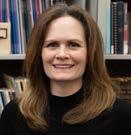
In her two-plus years as historic sites supervisor, Tiffany Grassmuck made a remarkable impact on the Kansas State Historic Sites. Her knack for building relationships and her background in historic preservation, art history, and political science were invaluable as the sites reopened and welcomed visitors after the pandemic. Having a central point of contact in Topeka to navigate the needs of the 16 historic sites has been crucial for keeping them accessible to thousands of visitors each year. Tiffany spent much of her first year collaborating with other Historical Society departments and local partners, particularly in Council Grove overseeing the renovation of Kaw Mission and Last Chance Store.
Featuring documentaries, YouTube videos, podcasts, and other audiovisual offerings that highlight engaging stories related to Kansas history.

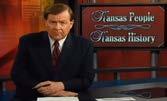
The reopening celebration in September 2023 was a true achievement that demonstrated her attention to detail and care for the sites. Under her supervision, the sites transitioned to free admission, several new site administrators were hired to fill vacancies, and many historic properties benefitted from repairs or exhibit refinements. Compliments were plentiful when Tiffany reestablished the annual site administrators meeting in March 2024. With the help of her administrative assistant, Amanda Pope, Tiffany also accomplished a sweeping project to reorganize decades of sites files and records. Tiffany’s service to the Historical Society has been a whirlwind of hard work. We send good wishes for her future endeavors and will miss her greatly!

The Battle of Kansas was an extraordinary effort by the U.S. Army Air Forces to deliver a fleet of combat-ready B-29s for the strategic bombing of Japan in 1944. In this 14-minute video Lance Geiger, aka The History Guy, details the military’s need for a bomber plane with a longer range and larger payload than the B-17 and B-24. The Boeing factory in Wichita played a key role in this massive project that was plagued by logistical issues, modifications, and frigid temperatures. Find out how the Battle of Kansas was won by watching this video, which references the Kansas Historical Society, at bit.ly/thg1944battle
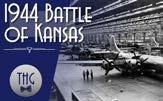
Katie Keckeisen, local history librarian for the Topeka and Shawnee County Public Library, tells the story of Clementine Paddleford for Kansas Public Radio. Paddleford was a pioneer food writer and editor. A native of Riley County, she earned a degree in industrial journalism from Kansas State University. After graduation Paddleford moved to New York City and began working as a freelance writer. She later became a household magazine editor and syndicated columnist. Unlike other food editors and writers, Paddleford employed an innovative and unique style in her writings. Learn more by listening to Keckeisen’s commentary at bit.ly/kprpaddleford
KSN-TV news anchor John Snyder hosts and narrates this segment featuring the history and notable figures of Wichita and other Kansas areas. This informative and comprehensive video highlights many famous Kansans such as Charles Curtis, Fred Harvey, and William Inge, along with notorious figures like Billy the Kid, John Brown, and William Quantrill. Commentary is provided by Eric Cale, executive director of the Sedgwick County Historical Museum; Ken Spurgeon, historian, teacher, and filmmaker; the late Noel Ary, a former leader at the Kansas Heritage Center; Chris White Walker, editor and publisher of the Emporia Gazette; and other experts. The 60- minute video was produced by KSN-TV in Wichita and features photos from the Kansas Historical Society. View it at bit.ly/ksntvkph
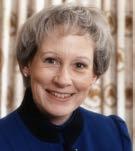

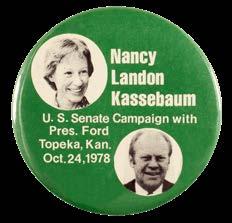
The Colored Radical was the first Black newspaper in Kansas. Published in both Leavenworth and Lawrence, the newspaper first rolled off the presses on August 24, 1876. T.W. Henderson and A.T. Williams, both African American ministers, were the editors. The Colored Radical supported the Kansas Republican Party during the 1876 U.S. election and argued against racial segregation. The cost of a subscription was 50 cents. The last issue was published on this day in 1876 not long after the election. The Colored Radical paved the way for the Colored Citizen, a newspaper started in 1877 by W.L. Eagleson in Fort Scott, which would be the first newspaper written, edited, and printed by a Black-owned business. To view the list of more than 80 African American newspapers published in Kansas, visit bit.ly/kshsaanewst
11–16

Nancy Landon Kassebaum Baker, the first woman from Kansas in the U.S. Senate, was elected on this day in 1978. She was born in Topeka on July 29, 1932, to former Kansas governor Alfred M. Landon and Theo Landon. In the Senate Kassebaum worked tirelessly on issues related to arms control, reducing the budget deficit, and health care. She co-sponsored the Health Insurance Portability and Accountability Act. Reelected in 1984 and 1990, in her last term she chaired the Senate Committee on Labor and Human Resources—only the second woman to chair a standing Senate committee. Kassebaum chose not to seek reelection in 1996. The following year she married Howard Baker of Tennessee, the former senate majority leader. Read more about this trailblazer at bit.ly/kshskpnlk


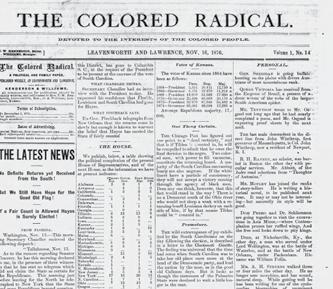
Abraham Lincoln spent a few days in Kansas Territory nearly a year before he was elected as he was preparing to run for president. Lincoln arrived in Elwood, Doniphan County, on this day in 1859. His speech at the Great Western Hotel condemned the institution of slavery. Lincoln also spoke in Troy, Doniphan, and Atchison. From the steps of the Planters Hotel in Leavenworth he urged voters to use the ballot box rather than violence to keep slavery from spreading into the territory. Lincoln was impressed by Kansas. When asked his opinion, he said, “If I went West, I think I would go to Kansas—to Leavenworth or Atchison. Both of them are, and will continue to be, fine growing places.” Learn more about Lincoln’s visit to Kansas at bit.ly/ kshskpalincoln
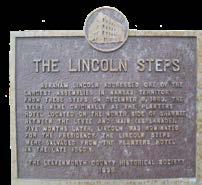
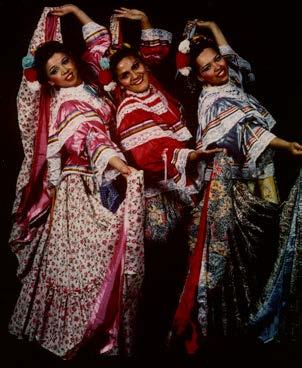
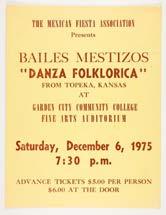

Bailes Mestizos, formed by Anna Maria Corona in Topeka in spring 1974, performed traditional dances of Mexico. Corona wanted an outlet for children and adults to celebrate their cultural heritage. Members ranged in age from grade school to adults and danced in Kansas, Iowa, and Nebraska with funding from the Kansas Arts Commission and National Endowment for the Arts. The troop performed their “Danza Folklorica” program in Garden City, Finney County, on this day in 1975. Patrick Gutierrez (pictured), an original member of Bailes Mestizos, explained, “It was a catalyst that changed my life.” Also pictured are Ana Rodriguez, Loysa Gutierrez, and Joanna Arce. The company ended in 1982 but inspired others to follow. Members

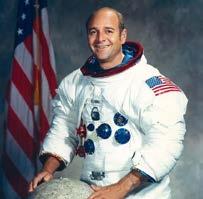
Residents in Dexter, Cowley County, were disappointed in 1903 when their “howling gasser” well produced gas that wouldn’t burn. State geologist Erasmus Haworth from the University of Kansas took the gas samples to chemistry professors Hamilton P. Cady (pictured on left) and David F. McFarland (pictured on right). Their extensive analysis resulted in a monumental discovery on this day in 1905 when the two men extracted helium from the gas mixture. At that time scientists believed helium only existed on the Sun. Many uses were found for the gas, including supplying military balloons during World War I and blimps during World War II. More recently helium has been used for space, defense, energy programs, and weather forecasting. To find more information about this Kansas wind gas, visit bit.ly/kudextergas
Images of these chemists and Cady’s lab book are courtesy of the Kenneth Spencer Research Library, University of Kansas
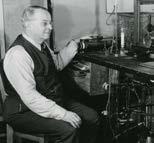
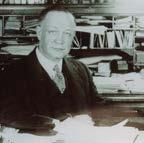

Astronaut Ron Evans, command module pilot on the Apollo 17 crew, began his solo lunar orbit on this day in 1972. A native of Francis in Cheyenne County, Evans graduated from Highland Park High School in Topeka and served as a pilot in the U.S. Navy during the Vietnam War. His 157 hour, 48 minute lunar orbit set a record that has yet to be surpassed. Meanwhile, crew members Eugene Cernan and Harrison Schmitt completed the longest human lunar landing, 3 days, 1 hour, 51 minutes, gathering rocks from the lunar surface. Evans then retrieved camera cassettes from the module during extravehicular activity (EVA), as part of the last Apollo Moon program. He remained active in NASA after his retirement. Learn more about this Kansas astronaut at bit.ly/kshskprevans
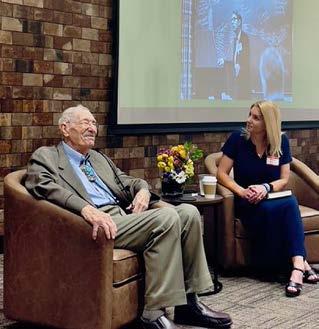
A member of the third generation of Topeka’s mental health clinic that shaped modern psychiatry, Dr. Walt Menninger has an amazing story to tell. He released that memoir with co-author Todd Fertig, family, friends, and fans at the Sunflower Foundation in Topeka on September 22, 2024. This event was among several planned as part of his book launch by Flint Hills Publishing.
Charles Frederick Menninger opened a medicine clinic in Topeka in 1919. When he opened a clinic in a farmhouse west of Topeka in 1925, the team and the focus expanded.
Sons Dr. Karl Menninger and Dr. William Claire Menninger introduced long-term in-patient care to treat psychiatric and mental health needs. It was not long before Menningers became a nationally preeminent mental health authority.
Dr. Walt spent the early years of his career with the Topeka State Hospital before joining the Menninger Foundation in 1964. He was its CEO from 1994 to 2001. Dr. Walt’s memoir looks back over his long association with the influential psychiatric clinic as the Menninger Foundation prepares to celebrate its 100-year anniversary.
Dr. Walt Menninger, president of the Kansas Historical Foundation from 2021 to 2022 discusses his memoir with Melissa Brunner, WIBW-TV.
EXPLORING THE ROLE OF
Kansas government, history, and social studies teachers gathered for this year’s Civic Engagement and Election Conference July 24-26 in Lawrence. Organized by the Dole Institute of Politics, one session explored the role of Kansas women in civic engagement. Bobbie Athon, KSHS director of communications (pictured far right), highlighted 14 women in Kansas history who had been active in their communities. These included suffrage leaders Clarina Nichols, who fought for women’s rights in the state’s constitution; Lucy Browne Johnston, who worked for passage of the suffrage amendment in 1912; and Jane L. Brooks, who led efforts to form the League of Women Voters. Elizabeth Washington helped coalesce numerous small groups to be the Kansas Federation of Colored Women’s Clubs. Lucinda Todd led the Citizen’s Committee on Civil Rights, early steps toward Brown v. Board of Education of Topeka. Hazel Gomez was a leader in her community’s League of United American Citizens (LULAC). Lucile Harris Bluford was tireless in her reporting of civil rights issues. Lyda Conley, the first Native American woman to argue in front of the U.S. Supreme Court, plead a case to preserve the sacred burial grounds of her people. Kansas women provide inspiring stories for future civic leaders.
The 2024 Kansas Museums Association Conference will be held Wednesday, November 6, through Friday, November 8, in Fort Scott. The conference will feature sessions on collections, exhibits, and education centering on this year’s theme, Reconnect and Rediscover Kansas. Site administrators Jim Dick and Alison Hamilton are excited to welcome registrants of the Wednesday morning tour to Mine Creek Civil War Battlefield, the site of one of the largest cavalry battles during the Civil War. At 2:10 p.m. Thursday, don’t miss “NAGPRA Basics and Beyond: What It Means for Kansas Museums,” to learn how to be a responsible steward of Native American collections from our State Archeologist Nikki Klarmann and Rachelle Meinecke, director of the Lowell D. Holmes Museum of Anthropology. Our staff members also look forward to conversing with you at our exhibitors table, which will be fully stocked with all the latest issues of Zephyr. To view the full conference schedule, visit ksmuseums.org
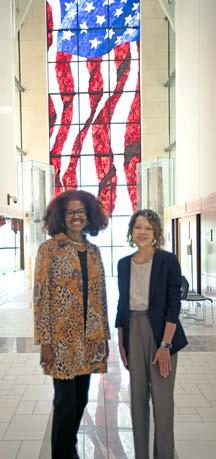

1 – Topeka
Kansas Historical Foundation Annual Meeting, 8:45 a.m. Friday, KSHS Potawatomi Mission
3 – Council Grove
Kaw Mission Councils, “The Return of In’zhu’je’waxo’be: Sacred Rock of the Kaw People,” presented by Jim Pepper Henry, 2 p.m. Sunday, the Dealership Building
6-8 – Fort Scott
Kansas Museums Association Conference, Wednesday to Friday; ksmuseums.org/events
9 – Council Grove
Candlelight Charm, 5 p.m. Saturday, Kaw Mission and Last Chance Store
11 – Statewide Veteran’s Day, all sites closed for the holiday
13 – Virtual Museum After Hours, “A Real American Goes Hunting: William Allen White and the KKK in Kansas,” presented by Beverley Olson Buller, 6:30 p.m. Wednesday, via Zoom and YouTube
18 – Lawrence Freedom’s Frontier Partner Meeting, 10 a.m. Monday, Carnegie Library; freedomsfrontier.org/partners/
28-29 – Statewide
Thanksgiving, all sites closed for the holiday

6-7 – Hays
Christmas Past, 6 p.m. Friday and Saturday, Fort Hays
8 – Emporia
White Christmas, 1 p.m. Sunday, Red Rocks
8 – Council Grove
Kaw Mission Councils, “Stevens’ Stone Mansions: Corruption on the Kaw Reservation,” presented by Site Administrator Mark Brooks, 2 p.m. Sunday, the Dealership Building
11 – Virtual
Museum After Hours, “Harriet Tubman and the Combee River Raid: The Fulfillment of John Brown’s Dream,” presented by Dr. Edda L. Fields-Black, 6:30 p.m. Wednesday, via Zoom and YouTube
14 – Kansas City Santa at Grinter Place, time TBD, Grinter Place
17 – Virtual Electronic Records Committee, 2 p.m. Tuesday, via Zoom
25 – Statewide Christmas, all sites closed for the state holiday
See more events by scanning the QR code or visiting bit.ly/kshscalendar
Editor’s Notes

Volume 2, Issue 1, Page 20: Third paragraph (9-13), fourth sentence should read, “The group brought a cannon, ‘Old Sacramento,’ captured from proslavery supplies to fire on the settlement of Hickory Point.”

Tune into the January/February issue for:
• Agency History In Celebration of Our 150-Year Anniversary
• Resources and Activities to Celebrate Kansas Day
• Summaries of the New National and State Register Listings
• A Simple Way to Donate to the Historic Sites This Tax Filing Season
Comments?
Thank you for engaging with Zephyr! We value your support and are grateful for your input. To leave feedback on this issue or provide suggestions for future issues visit bit.ly/zephyrcomment or scan this QR code.

CONNECT
Visit linktr.ee/kansashistory or scan this QR code for easy access to all of our social media and more!

Kansas Historical Society
6425 SW 6th Avenue
Topeka, KS 66615-1099